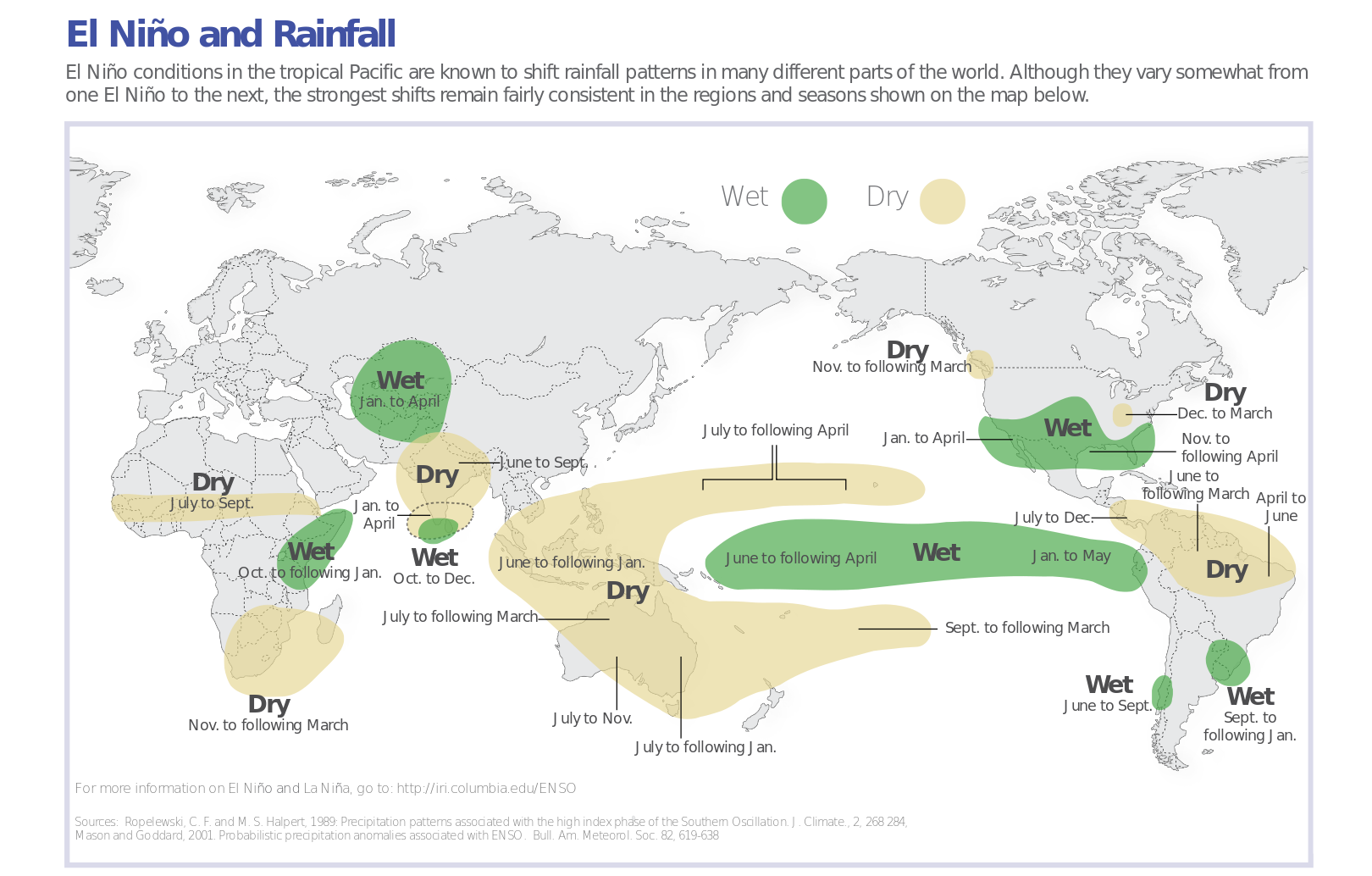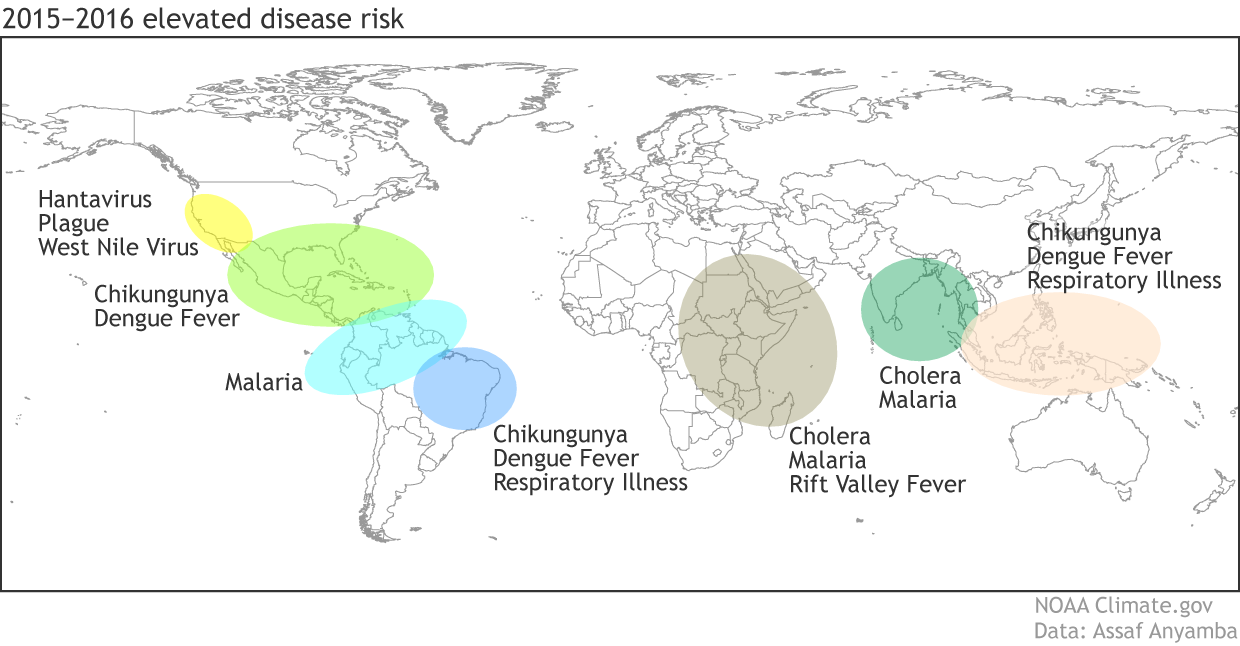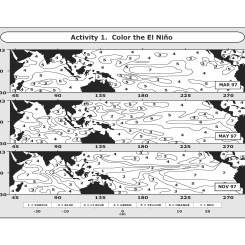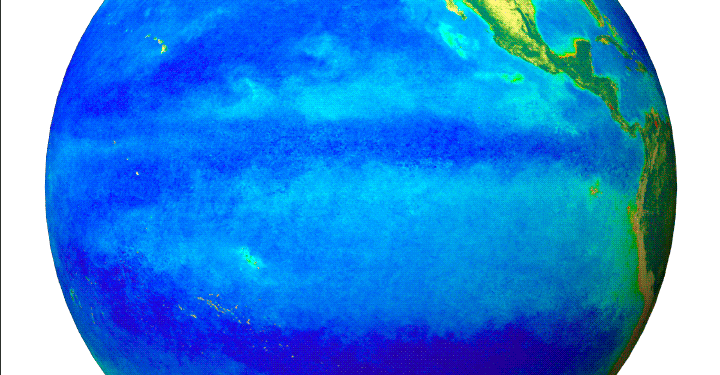Mini Lesson/Activity
El Niño & Spread of Human Disease
Overview
This mini lesson focuses on the 2015-2016 El Niño event and how its weather conditions triggered regional disease outbreaks throughout the world. Students will review a NASA article and watch the associated video to use as a tool to compare with maps related to 2015-2016 rainfall and elevated disease risk, and answer the questions.
Student Directions
El Niño is a recurring climate event, characterized by unusually-warm ocean water in the Pacific ocean, which has an effect on weather patterns around the world.
Read the article “2015-2016 El Niño triggered disease outbreaks across globe” and how different diseases are spread by different animals. Then review the associated video on a NASA study examining the effects of the 2015-2016 El Niño and health around the world. When you have reviewed the materials, answer the questions below.
Steps:
- Check with your instructor on how to submit your answers.
- Reflect on what you learned in the article and video.
-
Analyze the 2 maps below of El Niño and Rainfall and Elevated disease risk. Answer the following questions.

El Niño and Rainfall
Source: NOAA, Climate.gov
(https://www.climate.gov/news-features/blogs/enso/enso-and-your-health-how-2015-16-el-ni%C3%B1o-led-early-warnings-global-disease)
2015-2016 Elevated Disease Risk
Source: NOAA, Climate.gov
(https://www.climate.gov/news-features/blogs/enso/enso-and-your-health-how-2015-16-el-ni%C3%B1o-led-early-warnings-global-disease)
- What environmental changes are associated with El Niño events?
- Identify which diseases were elevated in Colorado and New Mexico. What do these states have in common?
- Which disease was elevated in Tanzania?
- Identify which disease was elevated in Brazil and Southeast Asia. What do these countries have in common and what was the impact?
- Explain how the environmental changes caused by El Niño caused the spreading of certain diseases (plague, hantavirus, cholera, and dengue fever)?
- Observe both maps. Then draw a model that illustrates how environmental factors affect the spread of disease.
Sources:
- Reiny, S. (2019, March 6). 2015-2016 El Niño triggered disease outbreaks across globe – Climate Change: Vital Signs of the Planet. NASA Climate Change. Retrieved July 19, 2022, from https://climate.nasa.gov/news/2846/2015-2016-el-nino-triggered-disease-…
- How the 2015-2016 El Niño Triggered Outbreaks Across the Globe. (2019, February 28). YouTube. Retrieved July 19, 2022, from https://www.youtube.com/watch?v=HMJjAxtX4ZQ
- Johnson, N. (2019, May 30). ENSO and your health: how the 2015-16 El Niño led to early warnings for global disease outbreaks | NOAA Climate.gov. Climate.gov. Retrieved July 19, 2022, from https://www.climate.gov/news-features/blogs/enso/enso-and-your-health-h…
- Understanding El Niño | National Oceanic and Atmospheric Administration. (2016, February 2). NOAA. Retrieved July 19, 2022, from https://www.noaa.gov/understanding-el-nino
Teacher Note
Teachers, these mini lessons/student activities are perfect "warm up" tasks that can be used as a hook, bell ringer, exit slip, etc. They take less than a class period to complete. Learn more on the "My NASA Data What are Mini Lessons?" page.
Teachers who are interested in receiving the answer key, please complete the Teacher Key Request and Verification Form. We verify that requestors are teachers prior to sending access to the answer keys as we’ve had many students try to pass as teachers to gain access.
Disciplinary Core Ideas:
- LS1A: Structure and Function
- LS2C: Ecosystems Dynamics, Functioning and Resilience
- ESS2A: Earth Materials and Systems
- ESS2B: Plate Tectonics and Large-Scale Systems
Crosscutting Concepts:
- Cause and Effect
Science and Engineering Practices:
- Developing and Using Models
- Analyzing and Interpreting Data



